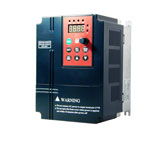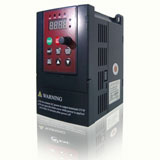Low noise motor
I have worked on Brushless DC Motors, BDCM, in the past, in disk drives where low noise is extremely important. 7200 rpm was a common speed.
Noise sources are two, (1) magnetic and (2) mechanical. Their noise mechanisms are quite different and must be approached separately. (Remember that for acoustic noise to be produced, some mechanical surface must move, i.e. vibrate.)
(1) Consider the magnetic source. To minimize noise everything should be as close to sinusoidal as possible, i.e. flux density waveforms and current waveforms, where the sine wave is the fundamental one only. Harmonics are to be minimized.
(2) Consider the mechanical sources. The most annoying noise sources in disk drives were tones produced by disk resonances and other mechanical structure resonances. Try not to excite resonances, i.e. natural mechanical modes. These disk drives used hydrodynamic bearings, so there was no bearing noise.
If you can design the stator and rotor magnetic paths such that there is no dynamic saturation under normal operating conditions (i.e., if something is saturated, it remains saturated as long as the power is on) and the laminations are skewed, it should be at least as quiet as a SPM. Depending on what type of load you're talking about, the control can be speed-sensorless (very simple for a fan or centrifugal pump/compressor, up to observer-based sensorless field orientation for a piston pump/compressor). IMs are also very robust to high temperatures.
Best of all, you never have to wonder where your rare-earth magnets are coming from. After 10 years of nothing but SPM and IPM, my clients are once again asking for induction motor controllers, primarily because of temperature issues and lead times for permanent magnets.
Noise sources are two, (1) magnetic and (2) mechanical. Their noise mechanisms are quite different and must be approached separately. (Remember that for acoustic noise to be produced, some mechanical surface must move, i.e. vibrate.)
(1) Consider the magnetic source. To minimize noise everything should be as close to sinusoidal as possible, i.e. flux density waveforms and current waveforms, where the sine wave is the fundamental one only. Harmonics are to be minimized.
(2) Consider the mechanical sources. The most annoying noise sources in disk drives were tones produced by disk resonances and other mechanical structure resonances. Try not to excite resonances, i.e. natural mechanical modes. These disk drives used hydrodynamic bearings, so there was no bearing noise.
If you can design the stator and rotor magnetic paths such that there is no dynamic saturation under normal operating conditions (i.e., if something is saturated, it remains saturated as long as the power is on) and the laminations are skewed, it should be at least as quiet as a SPM. Depending on what type of load you're talking about, the control can be speed-sensorless (very simple for a fan or centrifugal pump/compressor, up to observer-based sensorless field orientation for a piston pump/compressor). IMs are also very robust to high temperatures.
Best of all, you never have to wonder where your rare-earth magnets are coming from. After 10 years of nothing but SPM and IPM, my clients are once again asking for induction motor controllers, primarily because of temperature issues and lead times for permanent magnets.



